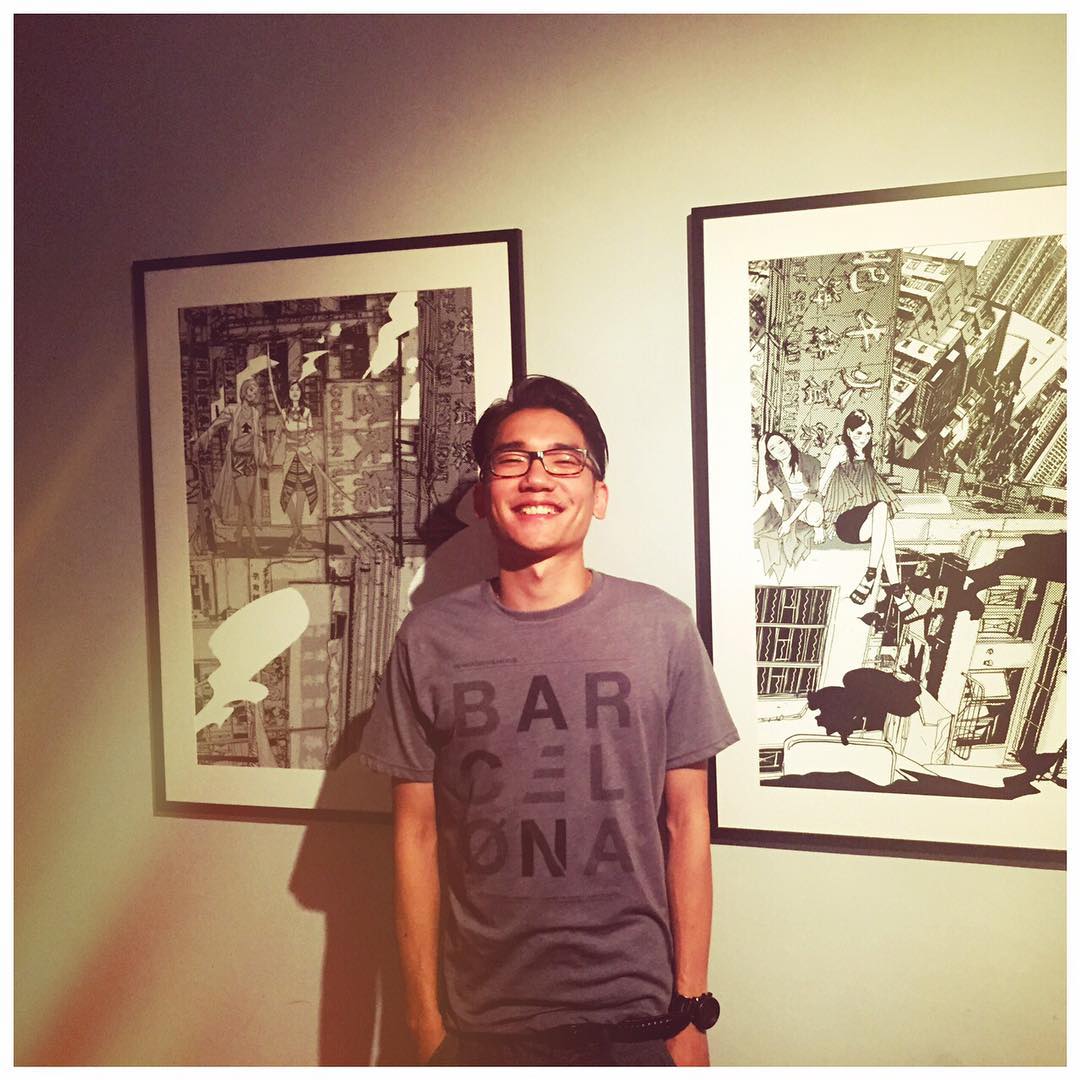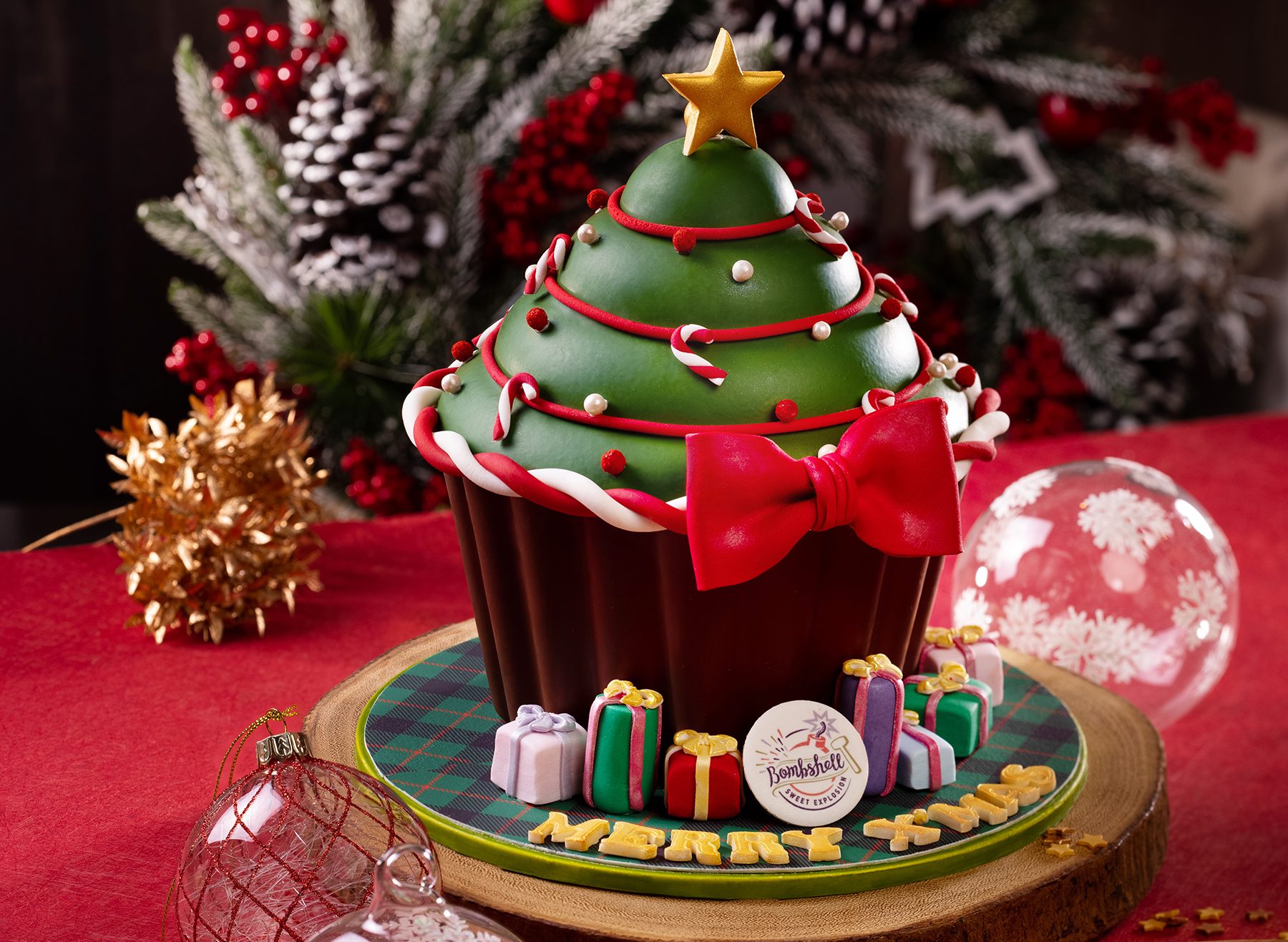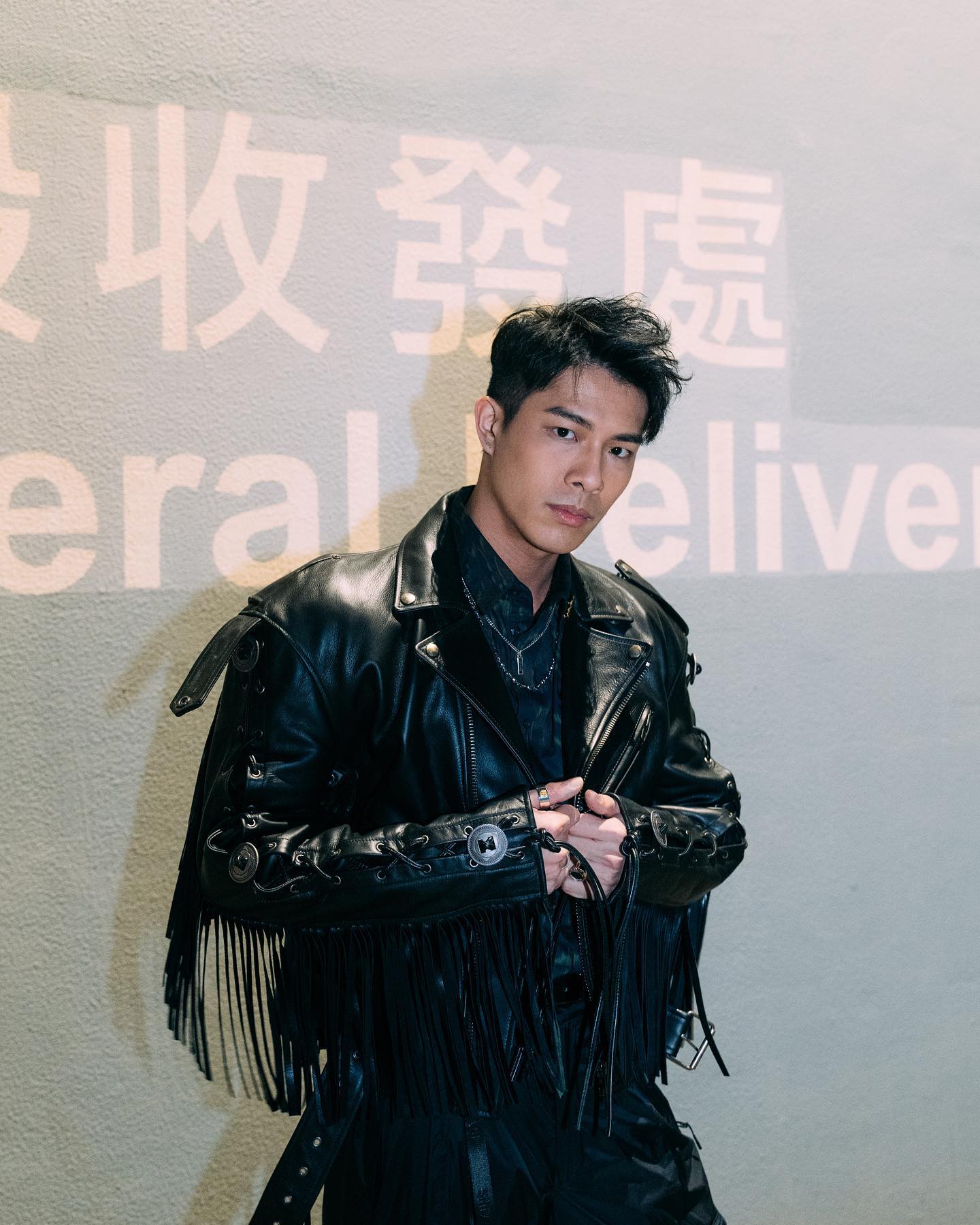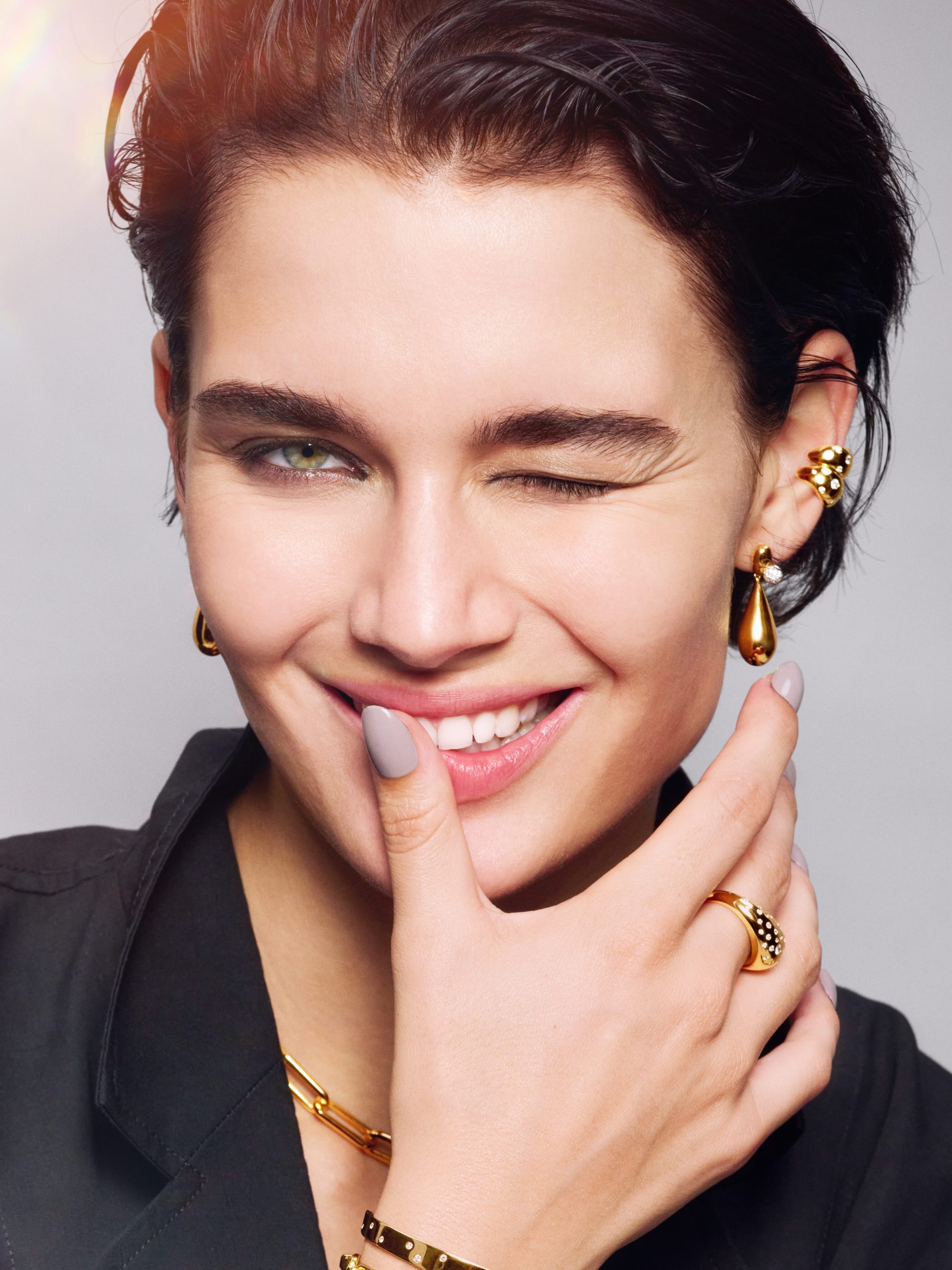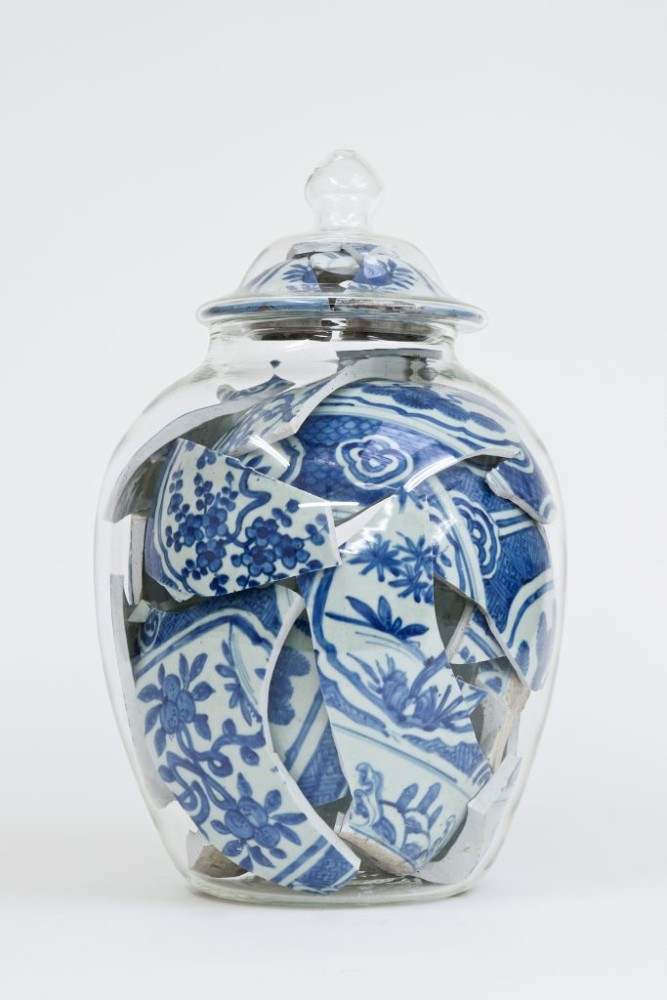
Diam. (Photo: Courtesy Galerie Ron Mandos, copyright the artist)
Can deconstruction meet reconstruction and yield a work of art? Instagram sure thinks so. Ceramic restorer and artist Bouke de Vries tells Zaneta Cheng how he sees beauty in the broken and blends a multitude of cultures in his sculptures.
Sometime last July, an image of a shattered vase, its shards of blue and white porcelain collected together within a glass replica of itself and captioned “in pieces but holding it together”, went viral on Instagram. Art-focused accounts like Visual Fodder that posted the image saw upwards of 28,000 likes, a sharp increase from its other posts, and hundreds of comments like “so meaningful” and “this is me”.
The artwork itself wasn’t new, and in fact dated back to 2015 as one of several Memory Vessels created by Dutch ceramic artist and restorer Bouke de Vries. But perhaps it was something about that moment in 2020 – when coronavirus was spiking for the first time after a months-long lockdown across Europe, the Black Lives Matter movement was still at fever pitch, Russia was in the midst of cleaning up a catastrophic oil spill and Lebanon was dealing with civil protests – that people needed something that spoke to how they were really feeling.
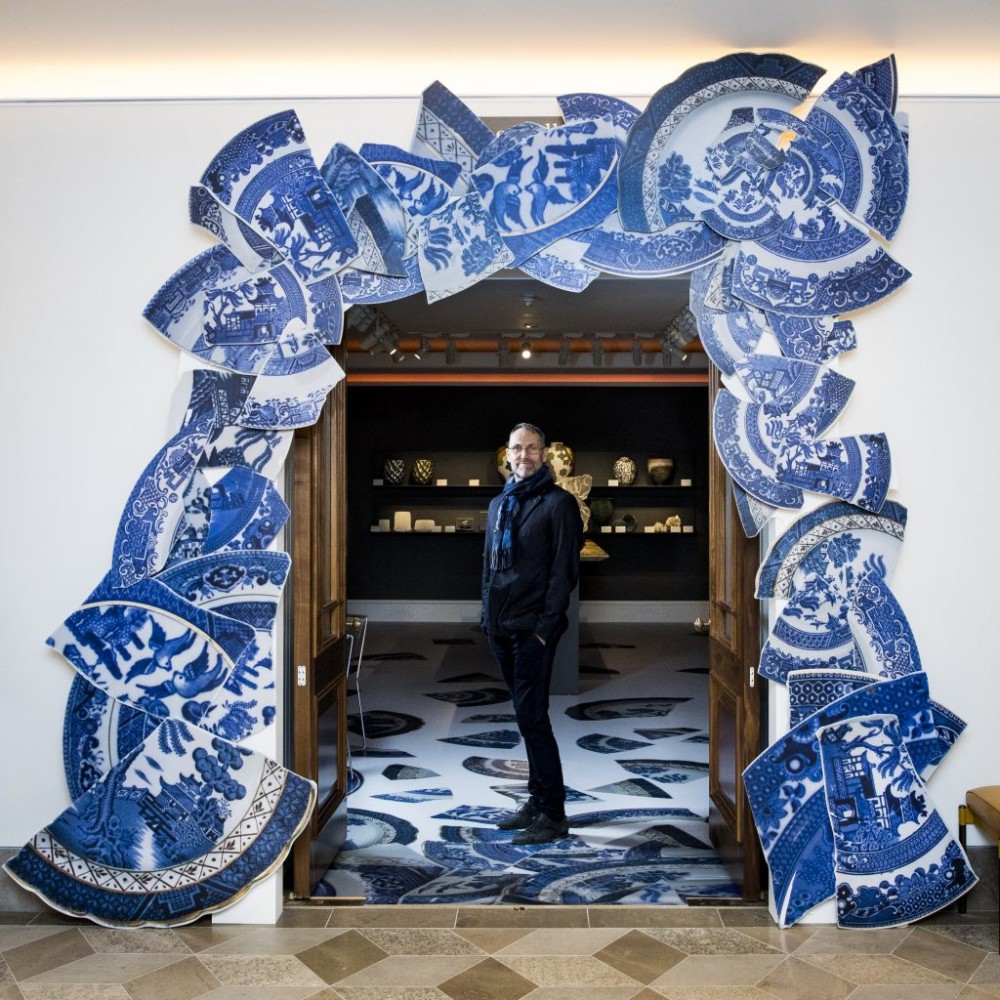
For de Vries, it was the first time a piece of his spoke so deeply to so many. After studying textile design at art colleges in the Netherlands (Design Academy) and London (Central School of Art), he worked for six years at the studios of John Galliano and milliner Stephen Jones. But realising his passion for heritage, de Vries left the world of fashion and retrained as a ceramics restorer. He continued working in restoration until 12 years ago when he became inspired to take the damaged ceramics that came his way and create art pieces that drew on the knowledge and skills he developed as a restorer as well as his passion for the history of ceramics.
“As a restorer, I was always intrigued by how some clients would want things restored in an invisible way. It made me think about perfection and imperfection, and how an object once damaged is often regarded as worthless”
Bouke de Vries
In addition to enjoying his newfound social-media fame, last year de Vries was commissioned to design a piece for Sotheby’s new entrance space in London, where he blew up large ceramic fragments photographically and arranged them to form an arch. He also has a spate of projects underway, including his first public sculpture to be installed on the University College London campus in spring and a limited-edition work for the Melly arts centre in Rotterdam. And, in a return to fashion, menswear brand Botter has reached out in hopes of collaborating on its next collection.
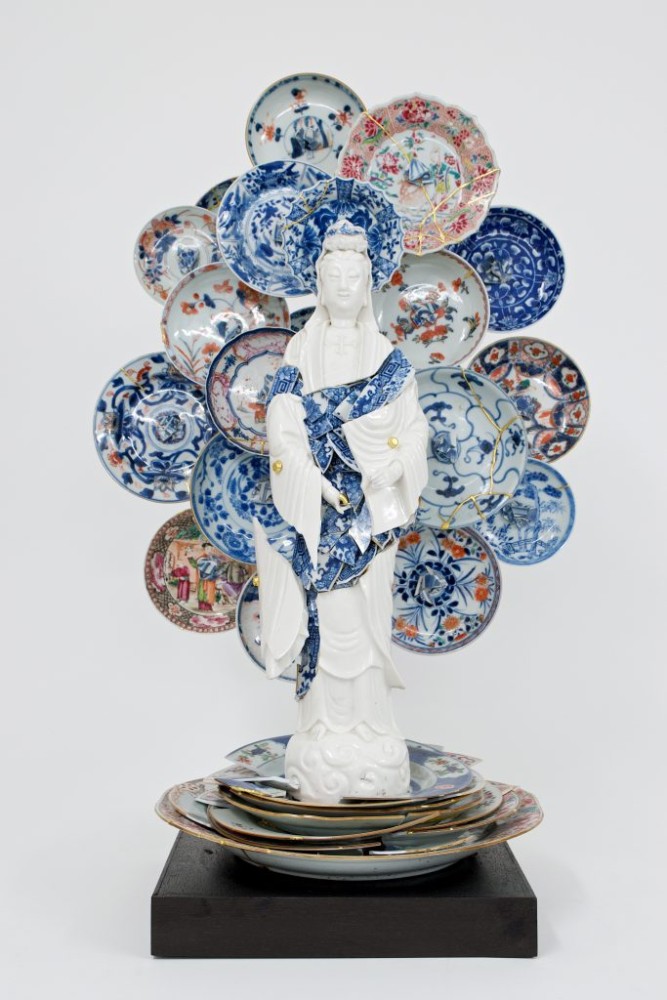
What was your reaction when you realised that your work had gone viral on Instagram last July? Why do you think it had as much impact as it did?
It was a total surprise and really amazing to see this happen. You hear about [things going viral] but it’s really strange when it happens to you. The pieces concerned are what I call Memory Vessels. While training to be a restorer, I did an internship at the V&A [museum in London], which included working on a large and beautiful glass Roman cinerary urn that would have contained a Roman citizen’s ashes. Years later, I had the idea of making a glass funerary urn for a broken vase.
When I find a great vase, broken but complete, I have an exact replica of it made in glass (like a memory of its original shape) and then arrange and fix the fragments inside. These pieces had a real resonance with what people were experiencing – in fact, people were transferring their own feelings onto these pieces. They started saying that that was how they felt and then someone called it “in pieces but holding together” and suddenly there was this stream of reposts, some getting tens of thousands of likes and some people making their own versions of it. The most extraordinary interpretation was a beautiful tattoo done by an incredibly talented tattoo artist from China.
You’ve been working with ceramics for a long time, initially restoring damaged pieces and now making works of art from broken antiques. What made you focus on the unconventional aspect of destruction?
The inspiration grew directly from my work as a restorer. As a restorer, I was always intrigued by how some clients would want things restored in an invisible way. It made me think about perfection and imperfection, and how an object once damaged is often regarded as worthless although it’s still imbued with all the qualities of the original [as well as] the sophistication and spirit of the civilisation that produced it. I wanted to make works where this damage becomes part of a piece’s history and to present it in a new context.

You employ the kintsugi technique in several pieces. What about this gold lacquering technique spoke to you?
I was taught the technique when I was studying to be a restorer.
I love the philosophy behind kintsugi; it very much aligns with the ideas behind my works. It treats damage as part of the history of an object. Rather than disguising the damage, it is enhanced with lacquer and gold powder, celebrating the trauma as a part of the piece’s story. I think that’s a wonderful way to look at the world.
And what of your process?
When I first began making pieces, I would start with the broken object. I would go out looking for damaged ceramics and then let the object itself suggest ideas of what I could do with it. Sometimes objects will sit on a shelf for a while before the idea comes.
As my practice has developed, the idea itself has increasingly become the starting point and I have had to find the ceramics to embody the ideas. It can take several years to find the right damaged ceramic for a particular project – but that’s part of the excitement. Over the years I’ve managed to build up a network of people who look out for things for me, which has made things a lot easier.
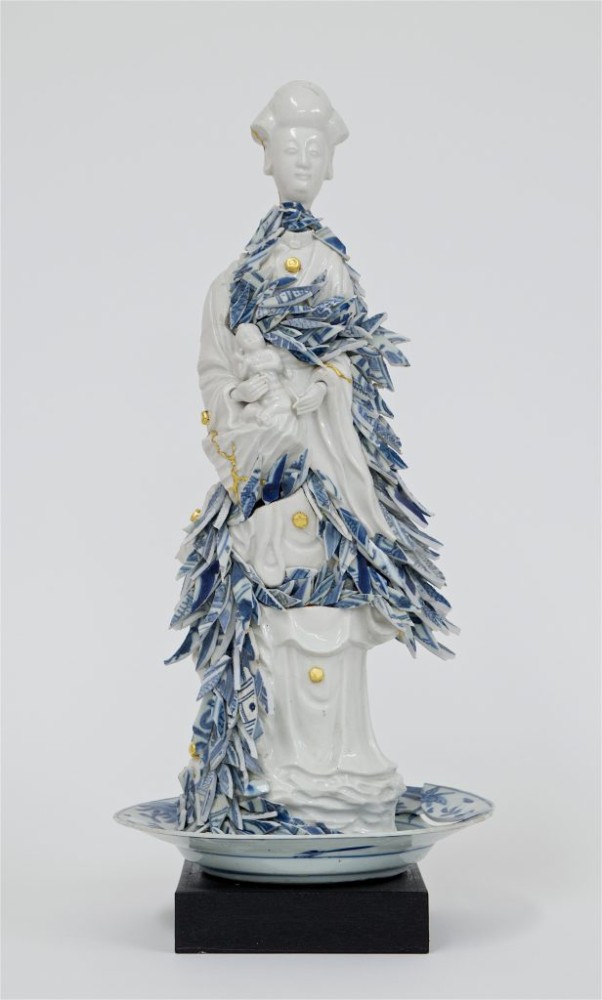
Tell us about the process that goes into selecting the ceramic pieces for your work. Is there a criteria from which you embark on your search?
The aesthetics of the objects is very important for me. They have to be objects I want to work with; they have to inspire me. I still get excited when I find a wonderful piece. Chinese ceramics play a big part in my work. Of course, their aesthetics play a major part in this. China has historically been the largest producer of ceramics so theirs is more available than any other ceramic type.
However, sometimes the quality of the ceramic is secondary to the idea. For example, for the map of Great Britain I made last year, I used generic transfer-printed Victorian “china” mass-produced in Stoke-on-Trent at the centre of the ceramics industry during the Industrial Revolution.
Yes, you incorporate a mesmerising variety of cultures in your art from still-life paintings of bucolic Dutch scenery to the Buddhist goddess Guan Yin.
History has always been one of my great passions. Being Dutch, 17th-century art runs through my veins. It’s a matter of great pride and it remains a very important source of inspiration for me. My interpretations of still-life were among the first pieces I made. Another aspect of my upbringing that has been an important
influence is religion. Although I’m no longer practising, being brought up Roman Catholic has left its mark and I was totally intrigued by Guan Yin’s connections with Catholicism. As the Church often did when spreading the word, they absorbed local traditions and they portrayed Guan Yin as an oriental Madonna. I love her for her beauty and serenity, and her message as goddess of compassion is very important to me and to the times we live in.
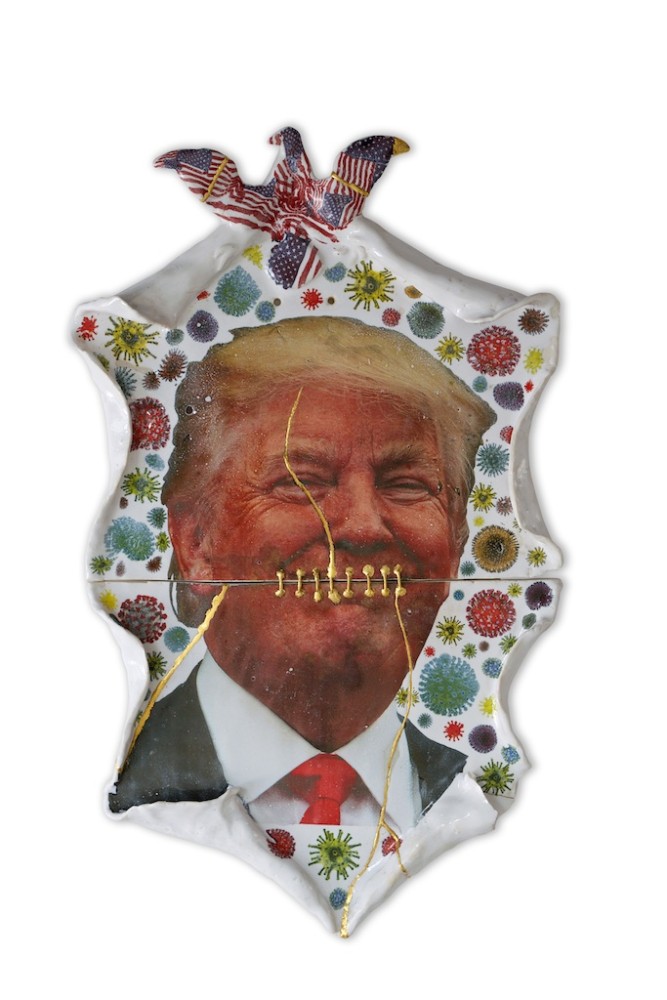
On the topic of the times we live in, were you creatively motivated during the pandemic-induced lockdown?
I was fortunate to have several commissions to work on at the start of lockdown, which kept me busy. But as the months passed and the severity of the situation increased, I made a triptych based on the COVID-19 crisis.
Although I don’t often make ceramics, I have occasionally made ceramic plaques with portraits of people I don’t like. I call them my Shut Up series. The plaques are made in two halves, split where their mouth is. I then connect the two halves using the old restoration technique of riveting (metal staples connecting the fragments). For this triptych, I did Donald Trump, Boris Johnson and [Brazilian president] Jair Bolsonaro. The three portraits are covered with images of the COVID-19 virus. The triptych is titled The Covid Criminals.
See also: Hong Kong flat smashes record for Asia’s most expensive apartment sold


